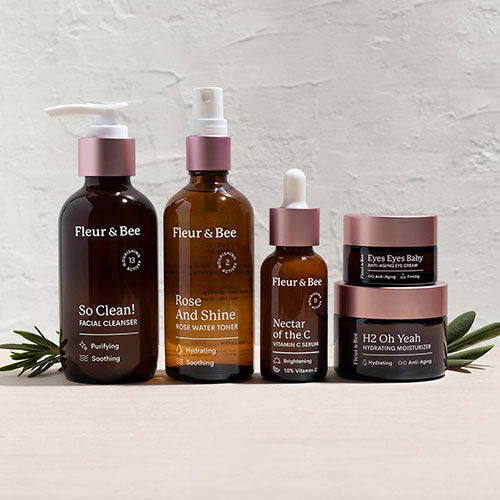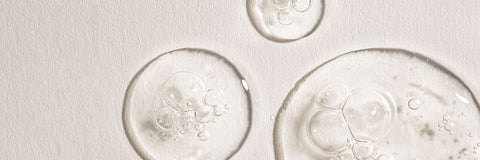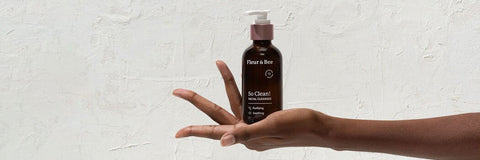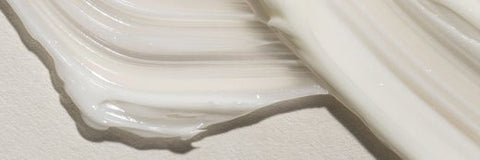If the word “formaldehyde” raises a red flag for you, there’s a good reason for that. Used in the embalming process for dead bodies, it’s often found as an ingredient in skincare products. As you’ll see from our article below, it should never be used for the living.
IN A NUTSHELL
Main Takeaways: As a dangerous carcinogen, formaldehyde, often used in the embalming process, is best left to the dearly departed.
Good to Know: Formaldehyde is far from the only preservative that can give skincare a long shelf life. There are plenty of natural preservatives that are far better choices.
Recommended Products: All Fleur & Bee products are formaldehyde free.
What is Formaldehyde?
Chances are, you’ve heard of formaldehyde either as an embalming fluid used in funeral homes, or for preserving those frogs or other animals you dissected in science class. While it’s certainly not healthy when used in those circumstances, formaldehyde is perhaps even more unwelcome in your skincare, where it’s sometimes used as a preservative. (Side note: as we’ll discuss later on, Fleur & Bee would never even think of using formaldehyde as a preservative or anything else!)
Formaldehyde is a naturally occurring organic compound (CH2O (H−CHO)) that exists in the form of a colorless gas. Known for its pungent smell, formaldehyde is often used for making building materials, glues, insulation, and as we’ve already discussed, in the embalming process.
The kind of formaldehyde used in funeral homes and in labs has been dissolved in water. Often used as a disinfectant, it does double duty as a preservative–but not just for dead bodies. It’s often used as a preservative in both cosmetics and food.
Is Formaldehyde Safe?
The short answer is no. It certainly is not safe when it comes to its use in skincare. Aside from the fact that formaldehyde has some very dangerous side effects (more on that in a minute), it’s a known irritant. Easily absorbed through the skin and eyes, it can cause severe irritation and burns in skin and even loss of vision in the eyes. When inhaled, it can act as a serious respiratory tract irritant. It can even cause a narrowing of the bronchi and cause fluid to build up in the lungs.
And if you happen to ingest it somehow? Well, according to the CDC, it can cause “corrosive injury to the gastrointestinal tract, especially the pharynx, epiglottis, esophagus, and stomach.” Not good!
Although formaldehyde occurs naturally, that doesn’t mean it’s safe for use. In fact, formaldehyde is an incredibly dangerous ingredient and is known to be a carcinogen when inhaled; for example, in the case of someone who works in a funeral home. When we use products with formaldehyde, such as skincare or food, we ingest it into our bodies.
And get this– even if you don’t see the word “formaldehyde” in an ingredients list, a skincare product can contain what’s called “formaldehyde releasers.” In some ways, this makes it even more dangerous.
How Do I Avoid Formaldehyde in My Beauty Products?
Chances are, right about now you’re asking yourself how you can avoid formaldehyde in your beauty products. Here are a few tips for doing just that:
1. Check Labels
One of the easiest ways to make sure you’re not using beauty products that contain formaldehyde is to check the label on every skincare product you use. And remember, you’re not just checking for formaldehyde– you’re checking for formaldehyde releasers, which are harder to identify.
2. Make Sure You’re Aware of Formaldehyde Releasers
As we said above, finding formaldehyde releasers in your skincare can be trickier than finding formaldehyde, because most people don’t know what they’re called. Here is a short list of formaldehyde releasers you should be aware of (and keep in mind–these are just the formaldehyde releasers that appear in skincare and cosmetics. There are others that are used in industrial products, like plywood):
- Benzylhemiformal
- 2-bromo-2-nitropropane-1,3-diol
- 5-bromo-5-nitro-1,3-dioxane
- Diazolidinyl urea
- DMDM hydantoin
- Formaldehyde
- Glyoxal
- Imidazolidinyl urea
- Methenamine
- Paraformaldehyde
- Polyoxymethylene urea
- Sodium hydroxymethylglycinate
- Quaternium-15

3. Make Sure You’re Aware of What Products Use Formaldehyde
It’s not just skincare that uses formaldehyde. Other beauty products like nail polish, nail polish remover, hair products like shampoos, eyelash glue, and baby shampoo, can all use formaldehyde. This is just a partial list of some of the biggest offenders, so don’t assume that because we haven’t mentioned a product, it doesn’t contain formaldehyde.
4. Seek Out Other Preservatives
Yes, formaldehyde is a super effective preservative, but it’s hardly the only one. There are many other preservatives that are safe to use, so there’s absolutely no reason you need to use beauty products with formaldehyde. Here are just a few of the alternatives you can look for in your beauty products:
- Phenoxyethanol - A result of the reaction between phenol (EU) and ethylene oxide (EU), phenoxyethanol is a naturally occurring preservative that is completely safe when used in concentrations of 1% or less. Made synthetically or naturally, it’s approved as a preservative by the Cosmetic Ingredient Review. Found in green tea and chicory, it is not considered safe for infants and young children to digest, so if you’re a nursing mother or have an infant, make sure not to put it where your child might be able to ingest it.
- Benzyl Alcohol - Although it’s found in some fruits, plants, and teas, benzyl alcohol is also found in quite an unlikely place– beaver glands. That said, beavers have nothing to worry about as it can also be created synthetically.
- Sodium Benzoate - If you’re thinking that sodium sounds like a salt, that’s because it is. Found in plums, it’s a natural, safe preservative that we use in our products.
- Potassium Sorbate - Also a salt, potassium sorbate is a wonderful natural preservative. Although found in nature, it can also be produced synthetically.
- Ethylhexylglycerin - A clear liquid, this preservative is used as an alternative to other preservatives. As an emollient, ethylhexylglycerin also helps keep the skin moisturized.
5. Choose a Brand That Believes in Using Clean, Non-Toxic Ingredients
If you do this, you won’t even need to check labels or give formaldehyde a second thought. At Fleur & Bee we use no parabens, sulfates, phthalates, silicones, GMOs, artificial fragrances, gluten, dyes, and definitely no formaldehyde. Whatever product of ours you use–from cleansers to masks, you can rest assured that it does not have formaldehyde in it.
Ready to switch to a clean skincare routine, free of nasty ingredients like formaldehyde? We’ve put together all the basics of a full skin care regimen in our Deluxe Set. This 5-step routine includes botanically-based and highly effective skincare products for healthier, happier skin.







